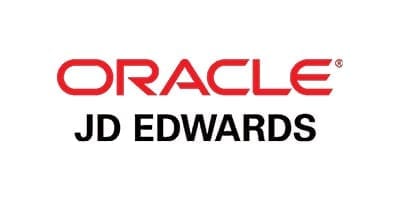The Key Considerations and Benefits of Upgrading JD Edwards
Curious as to why you should upgrade your JD Edwards environment? There are many reasons to upgrade and multiple benefits that come with it. In this article, we’ll cover some of the most important ones.
Oracle’s JD Edwards product line continues to evolve as new requirements, modern practices, and a loyal customer base demand more from their existing investments. Frankly, if you are not running EnterpriseOne 9.2, you have fallen behind in both the functionality and technology evolution of the product.
Without upgrading, support for new operating systems, database technologies, compilers, and the latest web browsers will become unavailable, limiting your ability to upgrade your overall technology infrastructure, increasing support costs, and hampering operational efficiencies.
Upgrade Considerations
As you consider your EnterpriseOne upgrade initiative, a number of questions arise for decision-makers at all levels. While each stakeholder may have their own set of requirements and drivers for the upgrade, a common set of questions exist:

Smartbridge is a JD Edwards Partner
These are important questions that key stakeholders need answers to prior to approving capital budget and resources to execute the project. While there is no single answer to these questions that applies to all clients, careful research and planning upfront can provide insight and reduce the risk of unpleasant surprises.
Smartbridge advises and helps our clients with their strategy and plan which provides answers to these questions and enables them to better prepare for a successful upgrade.
In addition to the high-level questions above, experience tells us that more specific and targeted considerations must be addressed in the planning process.
Business Considerations:
Functional Considerations:
Organizational Constraints:
Once these high-level considerations and constraints are understood, there will need to be a more in-depth review of the technical considerations which will influence the overall strategy.
Functionality:
Customization and Modifications:
Interfaces:
Infrastructure:
System Operations:
Vendor Hardware and Software Support Assessment:
Benefits of Upgrading JD Edwards
Support Considerations
Oracle Premier Support
Oracle has extended support for 9.2 through 2032. Lapsing support can introduce risk while keeping existing, bug fixes, and technology upgrades at every level just out of reach. For many organizations, lapsing support can adversely impact regulatory compliance.
Oracle Support for 3rd Party Products
Oracle has added support in the latest releases like Chrome, Microsoft Edge, Internet Explorer 11, Windows 10, SQL Server 2019, and many other 3rd party software packages. To obtain this support you must be on a current tools release or service pack.
Functional Considerations
Functional Improvements
Code included in new app releases can improve nearly every aspect of the functional landscape. Bug fixes, simplified processes, new features, and the ability to leverage technical components for automation are just a few of the benefits. These new improvements have the ability to drastically improve JDE, empower users, and ensure that JDE remains an exceptional investment; meeting the demands of a modern ERP.

9.2 Real-Time Summarization
Real-time summarization eliminates the need for multiple queries, batch jobs, and data exports by providing the ability to summarize information in a fraction of the time. Just click on the summation icon for totals.
This functionality is enabled in the following key applications:
Real-Time Financial Reconciliation Applications
This new feature allows JDE customers to close their books sooner by:
Technical Considerations
Enhancements within JD Edwards EnterpriseOne Tools 9.2
Depending on the release level, a multitude of technical enhancements and improvements are available.
64-Bit Capabilities
JDE has been around for a while, longer than many of us. It was originally based on a 32-bit architecture, but Oracle has since released upgrades that allow JDE users to harness the power of a 64-bit architecture. Some of the improvements include:
User-Defined Object (UDOs)
9.2 empowers users allowing them to create and customize their own objects. These customizations can be user-specific or shared with others. This alleviates the constant need for developers to code and customize existing objects based on individuals’ preferences and allows them to focus on higher-value tasks.
IoT Orchestrator
Customers can use Orchestrator to consume data from “things” like sensors on a wide variety of devices, transforming the data into actionable business processes in JD Edwards.
Embedded BI Publisher
BI Publisher reduces the high cost of producing, customizing, and maintaining business documents. It provides a full range of reporting capabilities, including charts, formulas, watermarks, and graphics. Using a set of familiar desktop tools, users can create and maintain their own report formats based on data extracts from JD Edwards EnterpriseOne reports.
One View Reporting Foundation
Enables end-users to create and run personalized reports directly from JD Edwards applications.
Application Interface Server
The AIS server provides a JSON over REST interface to applications and forms through the HTML server. The AIS server exposes this interface to enable secure communication. Secure Session Balancing is a recent enhancement that improves the scalability and fault tolerance by session balancing among multiple AIS servers. By reducing the load on the AIS server, there is optimal session distribution across all AIS servers.
Performance Considerations
EnterpriseOne Code Optimization
Oracle has released hundreds of performance improvement ESU’s. Enhancement of key processing UBE’s such as sales updates has been reported to have more than a 30% reduction in runtime between XE and the 9.2 releases.
Added support for newer database technologies from Microsoft, IBM, and Oracle ensure that businesses remain on the cutting edge while optimizing performance and security. New or improved features include High Availability options, data encryption, and disk space utilization improvements. Clients upgrading from SQL Server 2008 have reported reduction in some UBE runtimes from hours to just minutes!
Considering all of the technical improvements, new and enhanced functionality, support requirements, and overall improvements in usability, when are you going to upgrade to 9.2? If you are on 9.2 when are you going to upgrade to the latest tools? In either case, reach out to our team so we can help you realize the potential of your JD Edwards investment.
There’s more to explore at Smartbridge.com!
Sign up to be notified when we publish articles, news, videos and more!
Other ways to
follow us:


